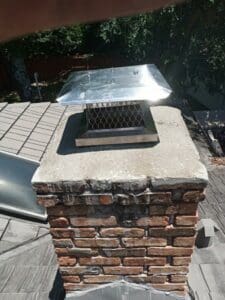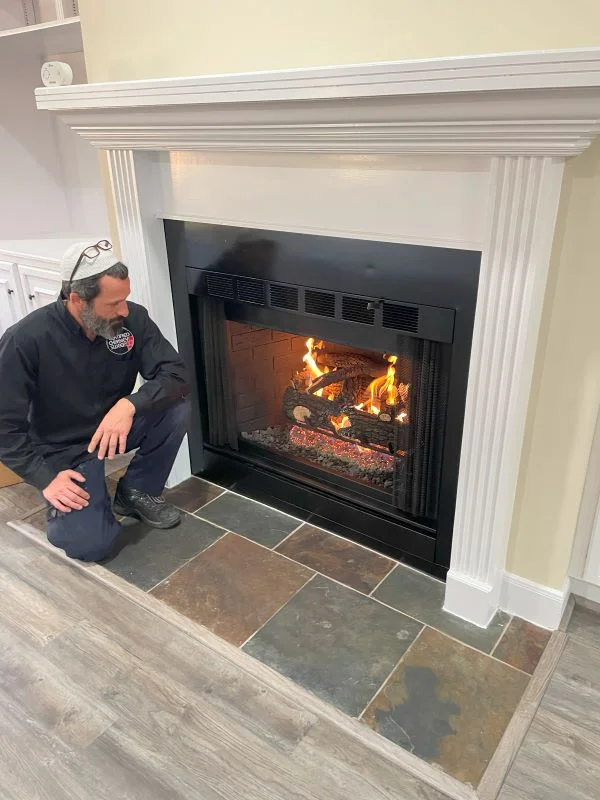 A chimney is more than just an architectural feature—it’s a key part of your home’s warmth, comfort, and safety. But over time, exposure to the elements, heat, and natural wear can weaken even the most well-built structures. If you’re considering a chimney replacement in Texas, choosing the right materials is the first step toward ensuring a durable, long-lasting upgrade.
A chimney is more than just an architectural feature—it’s a key part of your home’s warmth, comfort, and safety. But over time, exposure to the elements, heat, and natural wear can weaken even the most well-built structures. If you’re considering a chimney replacement in Texas, choosing the right materials is the first step toward ensuring a durable, long-lasting upgrade.
A well-built chimney not only enhances your home’s aesthetic appeal but also keeps your family safe from smoke, toxic gases, and potential fire hazards. With the right materials, you can prevent common issues like cracks, leaks, and structural instability. But with so many options available, how do you know which materials will stand the test of time, especially in the unpredictable Texas weather?
Why Material Choice Matters in a Chimney Replacement
Not all chimneys are built the same. The materials used in construction determine how well your chimney can handle extreme temperatures, moisture exposure, and long-term structural stability. In Texas, where the weather can swing from scorching summers to unexpected cold snaps, your chimney must be able to withstand thermal expansion, moisture infiltration, and shifting ground conditions.
A professional chimney inspection helps identify when replacement is needed and guides you toward the best material choice.
Brick Chimneys: Classic and Time-Tested
When you picture a chimney, you likely imagine brick. Its durability and heat resistance make it a popular option for chimney construction. However, mortar joints often deteriorate over time. That’s where chimney masonry repair or tuckpointing comes in.
With regular maintenance and chimney services, brick chimneys can last decades.
Stone Chimneys: Rugged Beauty with Unmatched Strength
Natural stone adds rustic charm and exceptional durability. While it absorbs less moisture than brick, stone chimneys are heavy and require a solid foundation. Skilled chimney installation ensures stability and long life.
The biggest factor to consider with stone chimneys is weight. Natural stone is heavy, meaning your home’s foundation must be strong enough to support it. Installation is also more complex, requiring skilled craftsmanship to ensure a stable, long-lasting structure. When done right, a stone chimney can last for generations with minimal maintenance.
Prefabricated Metal Chimneys: Lightweight and Efficient
Prefabricated stainless steel or aluminum chimneys are lighter, quicker to install, and often paired with gas fireplaces or electric fireplaces. Stainless steel is especially valued for its corrosion resistance and is often used in chimney relining projects to boost safety and efficiency.
Metal chimneys have excellent resistance to heat and corrosion, but they require proper insulation to prevent heat loss and condensation buildup. Stainless steel is generally preferred over aluminum due to its superior durability and rust resistance. While metal chimneys don’t offer the same traditional charm as brick or stone, they provide a sleek, contemporary look that works well with many home styles.
Concrete Chimneys: Solid and Resilient
For unmatched durability, concrete chimneys are a great choice. Resistant to both heat and moisture, they are often poured as a single structure, reducing weak points. These systems require fewer chimney repairs over time compared to brick.
One of the biggest advantages of concrete chimneys is their ability to handle extreme weather conditions. Unlike brick, which can crack over time due to temperature changes, concrete remains stable and requires little maintenance. If you live in an area prone to strong winds or heavy storms, a concrete chimney can offer unmatched durability.
Clay Tile Liners: Essential for Masonry Chimneys
Many wood fireplaces and wood stoves still use clay liners. While durable, clay tiles can crack with age and must be checked during every level 1 chimney inspection or level 2 inspection.
Stainless Steel Liners: A Long-Lasting Alternative
Stainless steel liners are often installed during chimney flashing replacement or chimney relining projects. They provide superior airflow, resist rust, and extend the life of your system.
Choosing the Right Material for Texas Weather
Given Texas’s extreme heat, humidity, and occasional freezes, durability is key. Stone, concrete, and stainless steel are top performers, while brick remains a timeless choice when paired with waterproofing and proper maintenance like sealing leaky chimneys and chimney cap repair.
Before making a final decision, consider factors like your home’s architectural style, maintenance preferences, and long-term investment. Consulting with a professional will help you determine which material aligns best with your needs and ensures a smooth, high-quality installation.
Protect Your Investment with Regular Maintenance
Even the most durable chimney materials require routine care to maintain their integrity. Texas weather, combined with the natural wear and tear of constant use, can lead to gradual deterioration. Keeping up with annual chimney inspections, waterproofing, and minor repairs will prevent small issues from turning into major problems.
If you’re considering a chimney replacement in Texas, staying informed about the best materials will help you make a wise investment. The right choice will enhance your home’s safety, efficiency, and aesthetic appeal for years to come. For more insights, expert tips, and updates, follow our blog and stay ahead of the curve on chimney maintenance and home safety.
Build a Long-Lasting Chimney
Choosing the right materials is the most critical step in ensuring your new chimney’s longevity and performance. Contact our team at Texas Chimney LLC to explore the best durable, weather-resistant materials for your chimney replacement.





